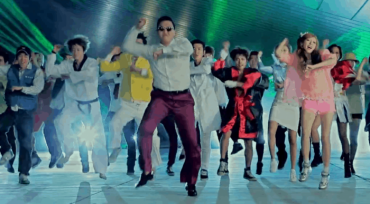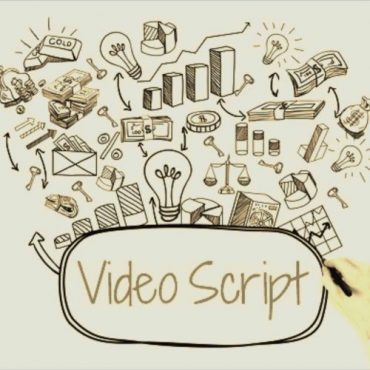Choosing the perfect animation style for your video.
You have the right content to tell the perfect story about your brand. You even have a meticulously crafted script. But when you approach a video production agency, you’re faced with a new question – what style of animation is right for the script? That’s when you probably realize that there are more than one ways to tell your story.
Yes, a “video” is by definition an audio-visual device that comprises of moving images created by illustrations or live models or both. But there are a lot of ways you can achieve your final product, and you’ll be surprised by the number of choices you have.
So, what style should you pick for your brand video?
To This Day from To This Day on Vimeo.
To This Day is a project based on a spoken word poem written by Shane Koyczan called “To This Day”, to further explore the profound and lasting impact that bullying can have on an individual. Animators and motion artists brought their unique styles to 20 second segments that will thread into one fluid voice. This video represents the many different animation styles and techniques an animated video can have, ranging from cell animation to 3D.
Consider this; this is your sales pitch to your consumer. It absolutely has to show them, not just tell them, who you want to convey. How you introduce yourself via video is as important as what you’re saying. That’s why we’ve broken down the process to help you understand what video style is going to suit your requirement best.
Let’s start by looking at the most prevalent video animation styles – this is by no means a comprehensive list, but will cover the most used ones in detail.
Whiteboard Animation
Whiteboard Animation is inherently a simple yet memorable style. It has a very “personable” quality to it, that lends it an endearing value. As the name suggests, it combines simplistic line drawings on a whiteboard, with a little bit of live footage thrown in (mostly of hands drawing the illustrations).
Here’s an example:
As you can see, its simplicity is what makes it engaging and informative. The images are often hand-drawn or at least made to look so, shifting the viewer’s focus to what’s being said. Companies using whiteboard animation explainer videos appear friendly, informal and warm.
Benefits:
- Presents concepts in a simple way
- Affordable; if your idea can be drawn, it can be executed
- Entertaining and engaging
Concerns:
- Not ideal for complicated data
- Can be perceived as unprofessional, or too informal depending on your target audience
- Has become very popular, everyone’s doing it
Infographic Animation
When you’re pitching your company, or just telling someone what it does, do you find yourself talking numbers a lot? If you want to show how your company makes an X% difference in the square root of Y which causes Z to do all sorts of positive things, you need the support of an infographic to convey your point.
Infographic animation can simplify complex data and statistics by presenting them in a step-by-step method.
Benefits:
- Simplifies complex data
- When done well, can be engaging
- Can be cost-effective, and quicker to produce
Concerns:
- If there’s not actually enough data, it can fall flat
- Information needs to be clearly explained
- With the wrong pacing, viewers can either get bored or lose the message
Stop Motion Animation
Ah, stop motion. This form of animation has a special place in our hearts because it takes time, lots of effort and love to be brought to life. And we mean ‘brought to life’- stop motion animation is wonderful for giving personality and movement to inanimate objects. It takes many hours of meticulous detailing, planning and execution. And the final labour of love, which is not 100% perfect like a regular 3D animation, it is this imperfection that gives it an artistic edge. This style is for those who believe the extra effort is worth showcasing their personality.
Take a look at this, and tell us if it doesn’t make you smile:
Benefits:
- Artistic, feels organic
- Rarely used in company videos, will stand out
- Captivating, can be very humorous
Concerns:
- Takes time, cannot be rushed
- Needs high levels of dedication to achieve quality
- Not great for explaining complicated data, or long-winded storylines
2D Animation
If you’d like an aesthetically pleasing, easy-to-understand video, this is your safest bet. Serious, humorous, off-beat or mainstream, 2D is great for telling any story you want. You just need to decide on a style of illustration to bring out your company’s personality. 2D is good for complex information, it even blends seamlessly with other styles such as infographics or text, to result in memorable stories.
Benefits:
- Looks polished and very professional
- Lots of visual effects and details can be included
- Takes relatively shorter time to create
Concerns:
- Very common technique, used by a lot of brands
- Can be visually unappealing if not done right
3D Animation
This style is the closest you can get to the real thing, and if you do it right, even better. 3D animation is ideal to replicate real-world objects in the video – think product showcases. It’s also perfect for world-building and creating an experience that the viewer is drawn into.
Of course, with the amount of time it takes to create stunning 3D visuals, it is quite uncommon in usage, and hence pretty unique.
Benefits:
- Unique and uncommon, will stand out
- Great for walkthroughs and product-focused videos
- Gives viewers a 360 degree view of a product
Concerns:
- Can be costly
- Takes considerably more time other animation styles
Now you know the main benefits of each animated video style. A chat with your video creators will tell you what’s achievable with your budget. Other than the budget, there are a few points to consider before you finally make your choice. Try to find answers to these questions:
What are your competitors doing?
Each video style has specific benefits, which is why one style tends to become popular in a particular industry. It’s nice to want to stand out from the crowd and do something different, but that may not always be the best idea. If (for example) you’re a B2B company focused on delivering the best packaging design, 3D animation might be the perfect style to convey your expertise. Find out what your competitors are doing, and decide how you can be creative while bringing out the benefits of your business.
What is your company personality?
Your video needs to cover the main benefits of your company quickly and concisely, and it also needs to reflect who you are. Stop-motion animation can be quirky and artistic, while whiteboard animation conveys friendliness and a simplification of information. Pick the right style for your kind of brand.
How easily can you explain what you do?
If your company benefit can be explained in a few words, a simpler video style might do the trick. If you need supporting statistics and your company caters to a niche or new concept, you might need a lot more visuals. Think about the key points you need to get across and what style best supports that.
Get these answers, take a look at the different style, and approach a video production agency with the right experience. If you’ve done your homework, you can’t go wrong.








